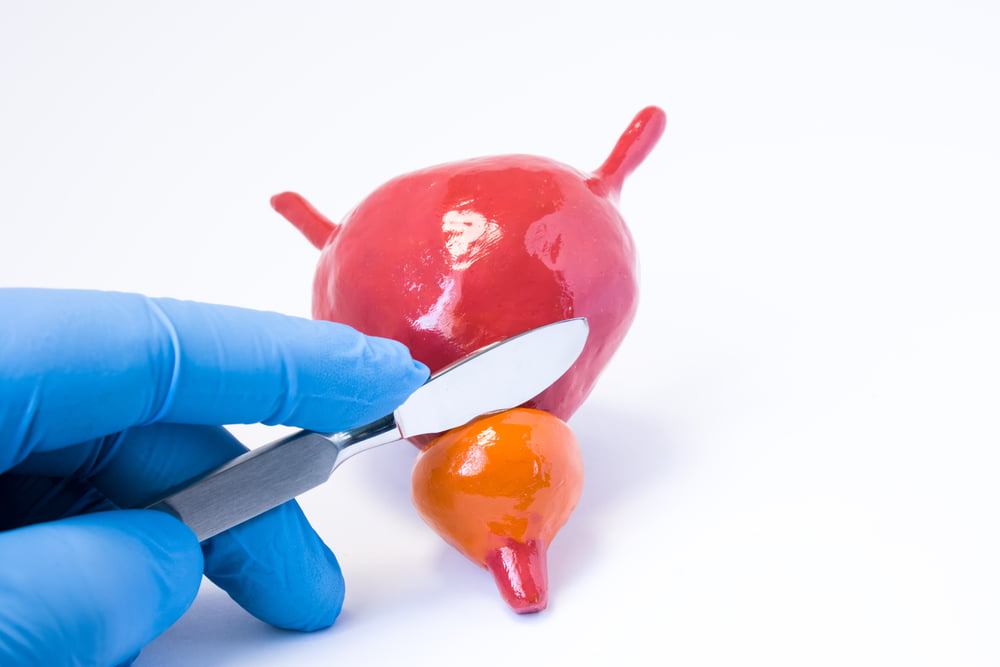Prostatectomy in Türkiye
Prostatectomy is an operation to remove the prostate gland and surrounding tissue from the seminal vesicles and some nearby lymph nodes. The removal treats prostate cancer in men.
What is the prostate?
It is a small male reproductive gland with the shape and size of a walnut. It is located under the abdomen and surrounds the urethra where it exits the bladder. It is part of the male reproductive system and secretes fluid that nourishes sperm.

Types of prostatectomy:
Two surgical methods are available to access and remove the prostate, the first known as open prostatectomy (the traditional approach). The second is laparoscopic or robotic resection (the modern approach), the latter of which is minimally invasive.
Open prostatectomy:
The surgeon first makes a vertical incision 8 to 10 inches below the navel. Then the prostate is removed through the incision and this method is considered “traditional” .
Laparoscopic prostatectomy:
The surgeon first makes small incisions to insert surgical instruments and a camera. He then removes the prostate gland from the surrounding tissues and seminal vesicles and finally reconnects the urethra with the neck of the bladder.
Robotic prostatectomy:
First, surgical incisions are made in the abdomen, similar to a laparoscopic prostatectomy. But here the surgeon controls an advanced and complex automated system of surgical instruments without touching the patient. This method is also distinguished by the formation of three-dimensional images of the place, which helps the doctor to perform the operation with high accuracy.
Comparison of the two approaches:
In 2003, 9.2% of all operations were performed using the modern approach. The percentage rose to 43.2% in 2007, and this percentage jumped to higher levels in subsequent years. It was also noted that:
- No difference was found in mortality rates or in the need for additional cancer treatment between the two approaches.
- The average hospital stay was two days for minimally invasive surgery and three days for open surgery.
- 2.7% of men who had laparoscopic surgery required a blood transfusion compared to 20.8% of men who had open surgery.
- There were fewer respiratory complications with minimally invasive surgery (4.3%) than with open surgery (6.6%)
- Low rates of enuresis and erectile dysfunction with open surgery were 4.7% for laparoscopic surgery and 2.1% for open surgery.
Recovery Stage
Most men stay in the hospital for one to three days after prostatectomy. A urinary catheter is inserted during surgery. Some men may need the catheter placed at home for a few days to a few weeks. Pain can be controlled with prescription medications. It may take weeks or months for function to return. Urinary and sexual issues should be restored to normal levels, and regular follow-up should be done after resection to ensure that the cancer does not return.
Risks of prostatectomy:
Radical prostatectomy carries a low risk of serious complications. Death or serious disability resulting from prostatectomy is rare, but the most important risks are:
- Nerve damage: Important nerves pass through the prostate to the penis. For experienced surgeons, most of these nerves are protected during prostatectomy, but complications from unintentional nerve damage include incontinence and erectile dysfunction (ED).
- Bleeding after the operation.
- Urinary leaks.
- blood clots
- infection.
- Poor wound healing.
- narrowing of the urethra;
Successful resection and cancer:
The main goal of prostatectomy is the treatment of prostate cancer, and if the cancer is limited to the prostate and has not spread, the survival rate after 10 years is 85%, but the percentage decreases if the cancer has spread, in which case more treatments may be needed.
Prostatectomy in Türkiye:
The medical staff of surgical teams, doctors and consultants in REHABTÜRK can provide the best treatment options and free consultations – by striving to keep abreast of the latest medical technologies and methods.

